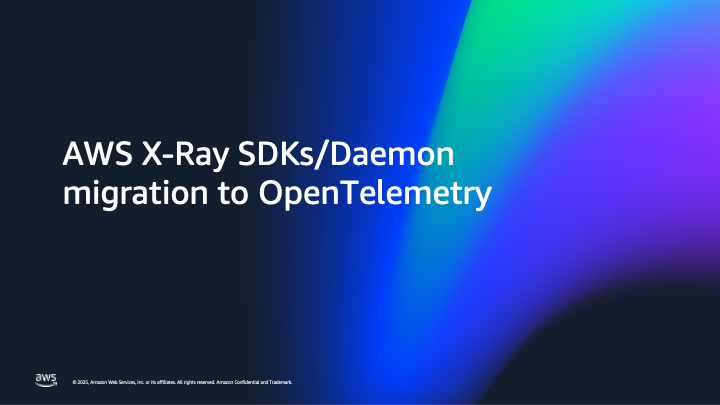AWS Cloud Operations Blog
Category: Open Source
AWS X-Ray SDKs/Daemon migration to OpenTelemetry
AWS X-Ray is transitioning to OpenTelemetry as its primary instrumentation standard for application tracing. OpenTelemetry-based instrumentation solutions are recommended for producing traces from applications and sending them to AWS X-Ray. X-Ray’s existing console experience and functionality continuous to be fully supported and remains unchanged by this transition. OpenTelemetry is the industry-wide open-source standard for tracing […]
Using the Fault Tolerance Analyser Tool to Identify Potential Issues
Introduction Ensuring resilience, the ability for a system to recover from a failure induced by load, attacks, and other issues, is a shared responsibility that underpins the reliability of your workloads. While AWS provides the resilient underlying cloud infrastructure, customers are tasked with maintaining the resilience of their applications. In this landscape of joint responsibility, […]
Policy-as-Code for Securing AWS and Third-Party Resource Types
This post was written by Scott Alexander and Kevin Formsma from Mphasis Stelligent. Every day, more developers are having lightbulb moments as they realize they can design and manage their infrastructure. It’s our responsibility, as practitioners of the DevOps mindset, to build systems that allow developers to move quickly and speed up the feedback loop […]
Introducing AWS CloudFormation Guard 2.0
In their blog post published last year, Write preventive compliance rules for AWS CloudFormation templates the cfn-guard way, Luis, Raisa, and Josh showed you how to use CloudFormation Guard, an open source tool that helps validate your AWS CloudFormation templates against a rule set to keep AWS resources in compliance with company guidelines. Since the […]
Introducing TypeScript support for building AWS CloudFormation resource types
If you’ve authored private resource types to extend the AWS CloudFormation registry, you might have used Java, Python, or Go, which, until now, were our officially supported languages. In this blog post, we will show you how to create a private resource type using TypeScript, the latest addition to our growing list of officially supported […]
Running bash commands in AWS CloudFormation templates
Oftentimes we find customers who want to extend their AWS CloudFormation templates by running a few lines of code during template execution. For example, to call an external API. In these cases, customers were directed to use either custom resources, resource types, or macros to accomplish the task. This is such a common pattern that […]
Handling Region parity with infrastructure as code
AWS CloudFormation allows you to create and manage resources with templates. AWS provides a number of Regions where its services and features are available. Although it can be beneficial to deploy the same AWS CloudFormation template in multiple Regions, customers who operate in multiple Regions face challenges due to parity differences among services and their […]
Automated configuration of Session Manager without an internet gateway
Session Manager is a fully managed AWS Systems Manager capability that you can use to manage your Amazon Elastic Compute Cloud (Amazon EC2) instances, on-premises instances, and virtual machines (VMs) through an interactive one-click browser-based shell or through the AWS CLI. Session Manager also provides secure and auditable instance management without the need to open […]







